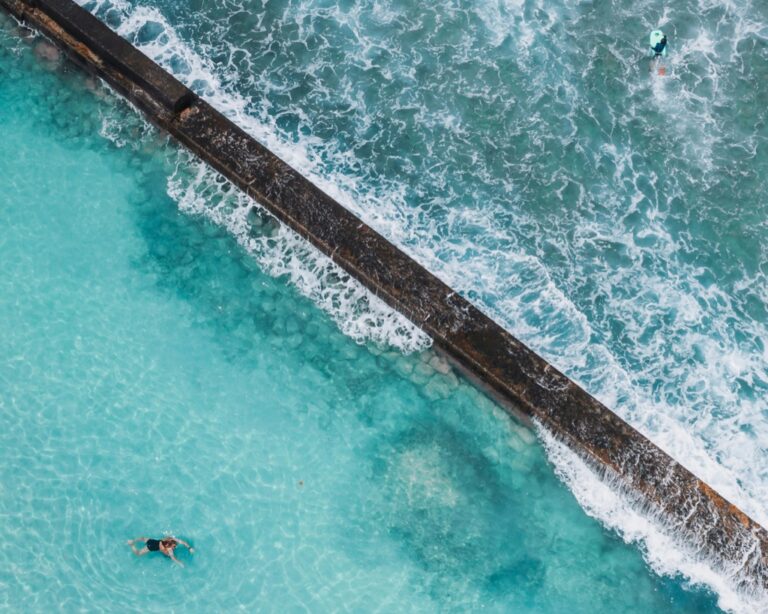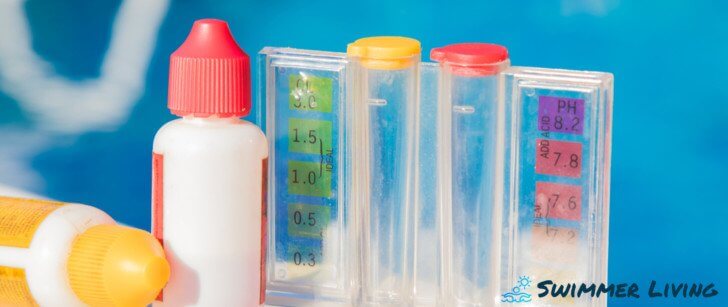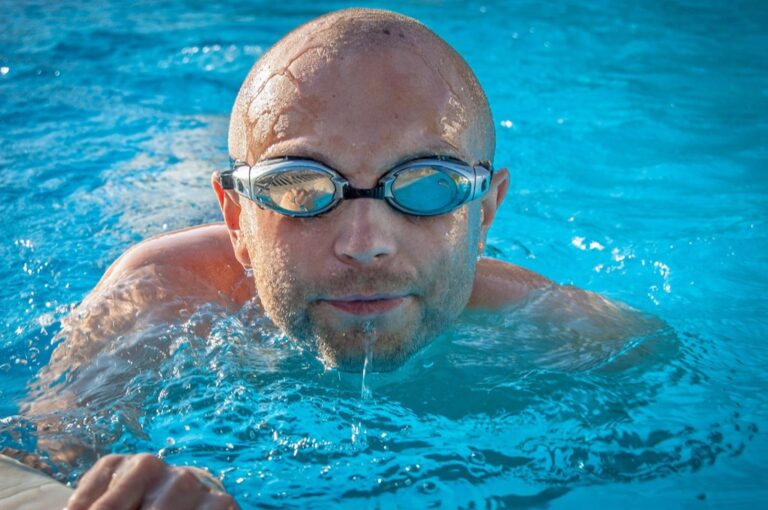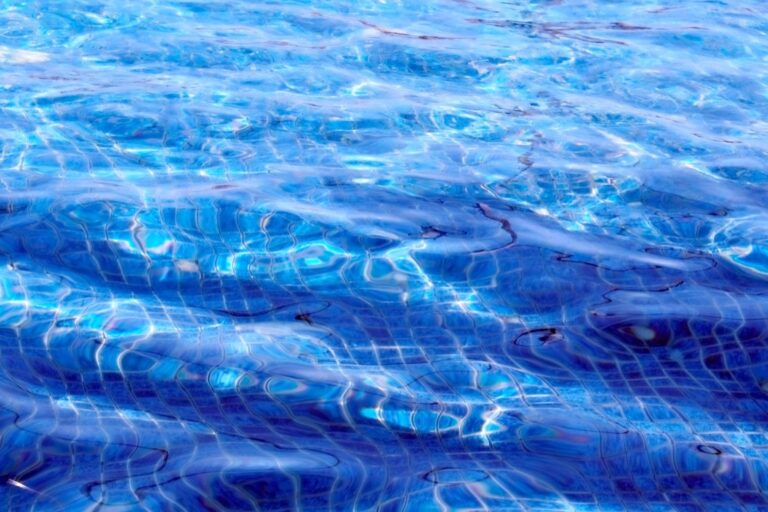7 Ways to Maintain Chlorine Levels During Extreme Heat That Pros Swear By
Discover proven strategies to maintain proper chlorine levels during hot weather, with expert tips on testing frequency, stabilizers, and nighttime dosing to keep your pool crystal clear all summer long.
When summer temperatures soar, your pool’s chlorine can evaporate faster than you might realize. This rapid depletion not only wastes your pool chemicals but can quickly lead to cloudy water, algae growth, and potential health concerns for swimmers.
Maintaining proper chlorine levels during extreme heat doesn’t have to be a constant battle if you understand the science behind why it happens and implement a few strategic practices. You’ll need to adjust your pool maintenance routine during heatwaves to ensure your water stays crystal clear and safely sanitized all summer long.
Disclosure: As an Amazon Associate, this site earns from qualifying purchases. Thank you!
Understanding How Heat Affects Pool Chemistry
When temperatures soar, your pool’s chemistry undergoes significant changes that directly impact chlorine effectiveness. High heat accelerates chlorine degradation through a process called photolysis, where UV rays break down hypochlorous acid (the active sanitizing component) up to 3-4 times faster than at moderate temperatures. During 90°F+ days, you’ll typically lose 30-50% more chlorine than on 75°F days. Additionally, heat speeds up bacteria and algae growth rates, creating a double challenge: your sanitizer disappears faster precisely when you need it most.
10 Essential Tips for Maintaining Chlorine Levels During Heatwaves
Increase Your Testing Frequency
During extreme heat, test your pool water at least twice daily—morning and evening. Standard testing becomes inadequate when temperatures soar above 90°F. Use reliable test strips or a digital tester to monitor free chlorine levels, which should stay between 2-4 ppm. Consistent monitoring prevents problems before they develop.
Adjust Your Chlorine Dosage According to Temperature
For every 10°F increase above 85°F, increase your chlorine dosage by 25-30%. At 95°F, you’ll need nearly double the normal amount to maintain proper sanitization. Always calculate based on your specific pool volume and current chlorine reading. Pre-dissolve granular chlorine in water before adding it to prevent bleaching.
Add Chlorine During Evening Hours
Add chlorine after sunset when UV exposure is minimal. Nighttime chlorination allows sanitizer to circulate throughout your pool for 8-10 hours before facing daytime heat. This timing strategy can improve chlorine efficiency by up to 50% during heatwaves. Consider using an automatic chlorinator with a timer for consistent evening dosing.
Use Chlorine Stabilizer (Cyanuric Acid)
Make your chlorine last longer with Clorox® Pool&Spa™ Stabilizer. It protects chlorine from sunlight, reducing the need for frequent applications and is ideal for saltwater pools.
Maintain cyanuric acid levels between 30-50 ppm during heatwaves. This stabilizer creates a protective shield around chlorine molecules, extending their effectiveness in sunlight by 3-5 times. Don’t exceed 50 ppm as higher levels can reduce chlorine’s sanitizing power. Test stabilizer levels weekly during extreme heat.
Invest in Pool Covers
Cover your pool whenever it’s not in use during daylight hours. A quality solar cover reduces chlorine loss by up to 35-40% by blocking direct UV radiation. For overnight protection, use a traditional pool cover to prevent both evaporation and heat retention. Liquid solar covers can provide an alternative when physical covers aren’t practical.
Run Your Filter System Longer
Extend filtration time by 2-4 hours during heatwaves. Increased circulation distributes chlorine more effectively and helps remove contaminants before they consume sanitizer. Run your pump during the hottest parts of the day when chlorine depletion is most rapid. Consider using a variable-speed pump to manage increased energy costs.
Shock Your Pool More Frequently
Shock your pool every 3-5 days during extended heat spells instead of the usual weekly treatment. Use calcium hypochlorite shock in the evening for maximum effectiveness. Apply 1-2 pounds per 10,000 gallons depending on bather load and temperature. Wait until chlorine levels drop below 5 ppm before swimming.
Reduce Phosphate Levels
Test for phosphates monthly during summer—they fuel algae growth during heatwaves. Keep levels below 100 ppb using a phosphate remover. Sources include fertilizers, leaves, and some pool chemicals. Removing phosphates can reduce your chlorine demand by 20-30% during high temperatures.
Maintain Proper pH Levels
Check and maintain pH between 7.4-7.6 during extreme heat. Chlorine works most efficiently in this range. Higher pH significantly reduces chlorine effectiveness—at pH 8.0, chlorine is only 20% efficient compared to optimal levels. Use small, frequent acid adjustments rather than large corrections.
Consider Alternative Sanitizing Methods
Supplement chlorine with UV systems, ozone generators, or mineral systems during heatwaves. These reduce chlorine demand by 50-75% while maintaining water quality. Salt chlorine generators can provide more consistent chlorine levels without daily additions. Ensure any supplemental system is properly sized for your pool volume.
Adding Chlorine at the Right Time of Day
Evening Applications for Maximum Effectiveness
Adding chlorine to your pool in the evening maximizes its effectiveness during extreme heat. Nighttime application prevents rapid UV degradation that occurs during daylight hours. You’ll get 8-10 hours of optimal sanitizing power while swimmers are typically absent. This timing also allows chlorine to fully circulate through your filtration system before the next day’s heat challenge begins.
Morning Maintenance Strategies
Early morning chlorine additions serve as supplemental maintenance rather than primary treatment. Test water before 9 AM to assess overnight chlorine loss and add small corrective doses if needed. You’ll want to focus on maintaining rather than building chlorine levels during morning hours. This approach creates a protective buffer against the day’s coming heat while avoiding wasteful midday applications when degradation rates peak.
Choosing the Right Chlorine Products for Hot Weather
Selecting appropriate chlorine products becomes crucial when temperatures soar, as the right formulations can significantly extend your sanitizer’s effectiveness.
Stabilized vs. Unstabilized Chlorine Options
Keep your swimming pool clean and sanitized with In The Swim's 3 Inch Stabilized Chlorine Tablets. Slow dissolving and individually wrapped for convenience.
Stabilized chlorine (containing cyanuric acid) is ideal for outdoor pools during heatwaves, protecting chlorine from UV degradation for up to 3-5 times longer than unstabilized options. Reserve unstabilized chlorine (calcium hypochlorite or sodium hypochlorite) for indoor pools, nighttime use, or when CYA levels already exceed 50 ppm to avoid over-stabilization.
Slow-Release Products That Combat Heat Degradation
Slow-release chlorine tablets and sticks offer superior performance during extreme heat, providing consistent sanitization for 7-10 days regardless of temperature fluctuations. Chlorine floaters with adjustable release settings allow you to increase distribution rates precisely during heat spells, while encapsulated products with UV-protective coatings can extend chlorine longevity by 25-40% compared to standard options.
Protecting Your Chlorine from UV Degradation
Using Cyanuric Acid as a Chlorine Shield
Cyanuric acid acts as sunscreen for your pool’s chlorine, protecting it from rapid UV degradation. Add 30-50 ppm of cyanuric acid to extend chlorine’s effectiveness by up to 8 times during heat waves. Maintain levels between 30-50 ppm for optimal protection without reducing chlorine efficiency, and test weekly during extreme heat periods to ensure proper levels. Remember that indoor pools rarely need cyanuric acid since they aren’t exposed to direct sunlight.
Physical Covers and Shade Solutions
Physical pool covers can reduce chlorine loss by 35-45% during peak sunshine hours. Consider using a solar cover when the pool isn’t in use to create a barrier against UV rays while capturing heat. Alternatively, install shade sails, umbrellas, or pergolas positioned to block direct sunlight during the hottest parts of the day (10am-4pm). These solutions not only preserve chlorine but also create comfortable poolside areas that extend your swimming season.
Managing Pool Usage During Extreme Heat
Establishing Pre-Swim Shower Rules
Require all swimmers to shower before entering your pool during heatwaves. Pre-swim showers remove body oils, sweat, and cosmetics that consume chlorine and create harmful byproducts. This simple 60-second ritual reduces chlorine demand by 35-40% and helps maintain sanitizer levels when you need them most. Post clear shower reminders near pool entrances to ensure compliance.
Limiting Peak-Hour Swimming Sessions
Restrict swimming during the hottest hours (10am-4pm) when chlorine degrades fastest. Consider implementing 45-minute swim sessions followed by 15-minute breaks to allow chlorine levels to recover. These strategic breaks reduce continuous chlorine demand by 20-30% and give you opportunities to test and adjust water chemistry without disrupting the swimming experience. During breaks, encourage swimmers to hydrate and rest in shaded areas.
Supplementary Treatment Methods to Reduce Chlorine Demand
When extreme heat puts pressure on your pool’s chlorine levels, supplementary treatment methods can significantly reduce overall chlorine demand and help maintain water quality.
Shock Treatments for Quick Recovery
Shock treatments provide rapid chlorine level restoration during heat waves. Apply a non-chlorine shock weekly during extreme temperatures to break down organic contaminants without adding stabilizer. This oxidizes waste compounds that would otherwise consume your free chlorine, creating an immediate 40-60% reduction in chlorine demand for 48-72 hours after treatment.
Alternative Sanitizers That Complement Chlorine
Incorporating alternative sanitizers creates a multi-barrier approach that reduces chlorine consumption by 30-50%. Salt chlorine generators produce consistent chlorine levels without storage concerns, while mineral systems using silver and copper ions provide residual sanitization. UV systems destroy 99.9% of passing microorganisms, and ozone injections deliver powerful oxidation that eliminates contaminants before they demand chlorine.
Proper Circulation and Filtration Adjustments for Hot Weather
Your pool’s circulation system works harder during extreme heat, making proper adjustments essential for maintaining chlorine effectiveness. When temperatures soar, your filtration strategy needs to adapt to combat accelerated chlorine loss and increased contaminant levels.
Extended Filter Run Times
During heatwaves, extend your filter run time by 2-4 additional hours daily. Instead of the standard 8-hour cycle, aim for 10-12 hours of filtration when temperatures exceed 90°F. Split these hours into two periods—morning and evening—to maximize water movement when chlorine is most vulnerable. This increased circulation prevents dead zones where algae can quickly establish colonies despite chlorine treatments.
Strategic Placement of Return Jets
Position your return jets to create a circular water flow pattern that eliminates stagnant areas where chlorine levels can deplete rapidly. Angle jets downward at a 45-degree angle to push chlorinated water toward the bottom of your pool where heat-loving bacteria typically multiply. During extreme heat, check and adjust jet positions weekly as equipment vibration can gradually shift their alignment and disrupt optimal circulation patterns.
Dealing With Common Heat-Related Pool Problems
Extreme heat doesn’t just accelerate chlorine loss—it creates specific water quality issues that require prompt attention. Understanding how to identify and address these common problems will help you maintain a healthy pool environment even during the hottest days.
Preventing and Treating Algae Blooms
Algae thrives in warm water when chlorine levels drop below 1 ppm. Brush pool surfaces daily during heat waves to disrupt algae formation before it takes hold. Apply an algaecide weekly as a preventative measure, focusing on shaded areas and steps where algae commonly starts. For existing blooms, shock with 2-3 times the normal chlorine dose at night, then filter continuously for 24 hours.
Addressing Cloudy Water Conditions
Heat-induced cloudiness typically results from inadequate filtration and depleted chlorine. Extend filter run times to 12 hours daily during extreme heat periods. Test and correct your pH levels to 7.4-7.6 immediately, as high pH (above 7.8) renders chlorine less effective. Add a water clarifier to coagulate microscopic particles, allowing your filter to remove them more efficiently. Vacuum the pool floor to remove settled debris.
Preparing Your Pool System Before Heat Waves Strike
Optimize Your Filtration System
Your pool’s filtration system is your first line of defense against heat-related problems. Before summer temperatures soar, clean or replace filter media completely. A clogged filter can reduce circulation by 30-40%, creating dead zones where chlorine isn’t distributed properly. Check the pressure gauge reading when the filter is clean, and backwash or clean when pressure rises 8-10 PSI above this baseline.
Inspect pump baskets and skimmers for cracks or damage that could restrict water flow. Pool professionals recommend increasing filtration time by 25-30% before heat waves arrive to establish optimal water conditions. Consider upgrading to a variable-speed pump that allows you to increase circulation during extreme heat without dramatically raising energy costs.
Balance Water Chemistry Proactively
Establishing perfect chemical balance before temperatures climb creates a stable foundation for your pool. Test and adjust your pH to 7.4-7.6, as this range optimizes chlorine efficiency by up to 65% compared to pools with unbalanced pH. Alkalinity should be maintained between 80-120 ppm to prevent pH fluctuations that can accelerate chlorine loss.
Pre-loading your cyanuric acid (stabilizer) level to 30-50 ppm provides immediate UV protection for your chlorine. Testing shows that properly stabilized pools maintain chlorine levels three times longer than unstabilized pools during peak sunlight hours. Address calcium hardness too—levels between 200-400 ppm prevent scaling and corrosion issues that can worsen during heat waves.
Install Heat-Mitigation Equipment
Adding the right equipment before summer hits can dramatically reduce chlorine consumption. Liquid solar covers reduce evaporation by 30-40% while allowing swimming, unlike traditional solid covers. UV sanitizing systems cut chlorine demand by up to 50% by neutralizing bacteria and algae before they can consume your chlorine.
Automated chemical controllers with ORP (oxidation-reduction potential) sensors monitor sanitizer effectiveness rather than just concentration, adjusting chlorine feed rates based on actual demand. These systems typically pay for themselves within 1-2 seasons through reduced chemical usage. Shade structures strategically placed over portions of the pool can reduce UV exposure by up to 75% in covered areas.
Establish a Heat Wave Action Plan
Create a written maintenance schedule specifically for periods of extreme heat. Your plan should include twice-daily testing routines, predetermined shock treatment intervals, and specific filtration extensions. Pool owners who implement formal heat wave protocols report 60% fewer water quality issues during extended hot periods.
Stock sufficient chemicals for at least two weeks of increased usage—many pool owners underestimate that chlorine consumption can double or triple during heat waves. Set calendar alerts for weather forecasts exceeding 90°F, triggering your enhanced maintenance protocol before problems develop. This proactive approach prevents the need for costly remediation when supplies may be limited during regional heat events.
Conclusion: Year-Round Strategies for Chlorine Stability
Maintaining proper chlorine levels during extreme heat doesn’t have to be a constant battle. By understanding how temperature affects pool chemistry and implementing the strategies outlined above you’ll be well-equipped to keep your pool sparkling clean even during the hottest days.
Remember that preparation is key. Clean filters efficient circulation and balanced water chemistry form your first line of defense against heat-related chlorine loss. Add protective measures like stabilizers covers and supplementary sanitizing methods to create a comprehensive approach.
Don’t wait until your pool turns cloudy or green to take action. With consistent testing proper chemical adjustments and a proactive maintenance schedule you can enjoy a healthy swimming environment all summer long regardless of what the thermometer reads.
Frequently Asked Questions
Why does chlorine evaporate faster in hot weather?
Chlorine evaporates faster in hot weather due to a process called photolysis, where UV rays from the sun break down hypochlorous acid (the active sanitizing component). In temperatures above 90°F, chlorine can degrade 30-50% faster than in moderate temperatures. The heat accelerates chemical reactions and causes more rapid evaporation of chlorine from the water surface.
How often should I test pool water during a heat wave?
During a heat wave, you should test your pool water at least once daily, preferably in the evening. This increased frequency allows you to monitor chlorine levels more closely when they’re depleting faster. Many pool professionals recommend twice-daily testing (morning and evening) when temperatures consistently exceed 90°F to ensure sanitizer levels remain adequate.
What’s the best time of day to add chlorine during hot weather?
The best time to add chlorine during hot weather is in the evening after sunset. Adding chlorine at night allows it to dissolve and distribute throughout the pool without immediate UV degradation. This timing maximizes chlorine efficiency and ensures your pool has adequate sanitizer levels during the following day when sun exposure is highest.
What role does cyanuric acid play in summer pool maintenance?
Cyanuric acid (CYA) acts as a “sunscreen” for chlorine, protecting it from rapid degradation by UV rays. During hot weather, maintaining proper CYA levels (30-50 ppm for residential pools) is crucial as it can extend chlorine’s effectiveness by up to 3-5 times. Without adequate stabilizer, chlorine can dissipate within hours on sunny days.
Should I use different chlorine products during summer?
Yes, during summer you should consider switching to stabilized chlorine products containing cyanuric acid for outdoor pools. Slow-release chlorine products like trichlor tablets or floating dispensers provide more consistent sanitization during hot weather. For extremely hot periods, some pool owners prefer using liquid chlorine in the evenings for an immediate boost.
How does a pool cover help maintain chlorine levels?
A pool cover helps maintain chlorine levels by creating a physical barrier against UV rays, which are the primary cause of chlorine degradation. Covers can reduce chlorine consumption by up to 35-40% during hot weather by limiting both evaporation and photolysis. Additionally, covers keep debris out, reducing the overall chlorine demand in the pool.
What pH level is best for chlorine efficiency in hot weather?
The ideal pH level for chlorine efficiency during hot weather is between 7.2 and 7.6, with 7.4 being optimal. At this slightly alkaline pH, chlorine maintains its maximum sanitizing power while remaining comfortable for swimmers. Higher pH levels (above 7.8) can reduce chlorine effectiveness by up to 50%, which is particularly problematic during hot weather.
How can I prepare my pool filtration system for a heat wave?
Prepare your filtration system by cleaning or replacing filter media, checking for leaks or damage, and ensuring pumps are operating efficiently. Increase filtration run time to 10-12 hours daily during heat waves to improve water circulation and chlorine distribution. Consider scheduling filtration during cooler hours (overnight) when possible to reduce equipment heat stress.
Are there alternatives to chlorine that work better in hot weather?
While chlorine remains the primary sanitizer, supplementary systems can reduce chlorine dependency during hot weather. Salt chlorine generators provide consistent chlorine levels without handling chemicals. UV sanitizers and ozone systems can reduce chlorine demand by up to 50-70%. Mineral sanitizers containing silver and copper ions also complement chlorine’s effectiveness during extreme heat.
What emergency steps should I take if my pool turns green during hot weather?
If your pool turns green during hot weather, first shock the pool with a high dose of chlorine (usually 2-3 times normal), preferably in the evening. Brush the pool surfaces thoroughly, run the filter continuously for 24 hours, and test water chemistry. Add algaecide specifically formulated for your type of algae. Maintain proper pH (7.2-7.4) to ensure shock treatment effectiveness.







